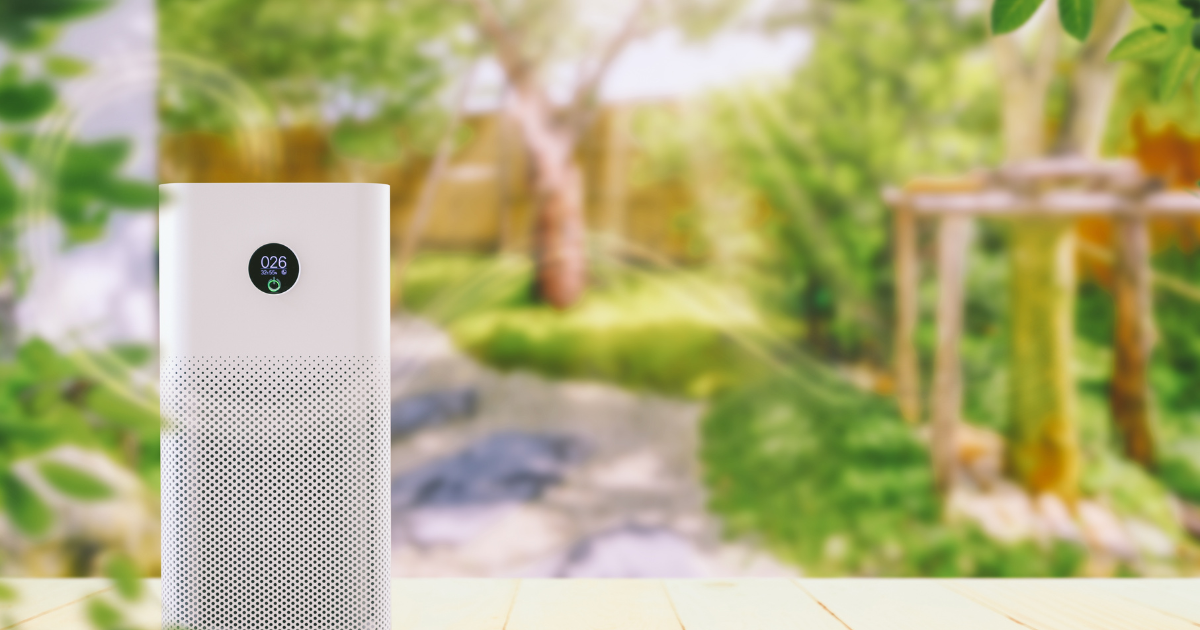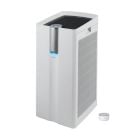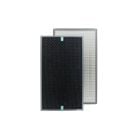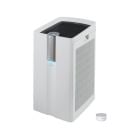Do Air Purifiers Work for COVID and Other Viruses?

Estimated Reading Time
- 2 Minutes
TLDR
In the ongoing fight against COVID and other viruses, people globally are looking for effective solutions to keep their environments safe and healthy. Air purifiers have surged in popularity as a frontline defense against airborne pathogens. But do they truly work, and can they be a cost-effective solution in this context? This article aims to unravel the science behind air purifiers and highlight their potential cost-saving benefits.
Breathing clean, pure air is a necessity for maintaining health and wellness in our homes, schools, and workplaces. The rise in popularity of air purifiers for home and commercial uses underscores a growing awareness and need for quality indoor air, especially in today’s post-COVID world. But do they really get rid of airborne pathogens, and are they cost-effective? This guide will give you the answers.
Understanding Air Purifiers and How They Work
Air purifiers use advanced mechanisms to cleanse the air we breathe and improve our health and well-being. There are three main types to cater to different needs and preferences: HEPA filters, activated carbon filters, UV-C light, and ionizers.
HEPA Filters
HEPA air purifiers are the most commonly used air purifiers to fight against SARS-CoV-2 (the virus that causes COVID-19) and other airborne pathogens. They force air through a fine mesh High-Efficiency Particulate Air (HEPA) filter that traps harmful particles as small as 0.3 microns, including:
- Dust
- Pollen
- Smoke
- Bacteria
- Viruses
- Fungi
Activated Carbon Filters
Activated carbon filters have a porous surface that traps unwanted smells and particles from wildfire smoke, gasses, and volatile organic compounds (VOCs). They’re often combined with HEPA filters to give you completely pure, particle-free, fresh-smelling air.
UV-C Light
UV-C light uses ultraviolet light to neutralize airborne pathogens— including viruses and bacteria— by disrupting their DNA and rendering them harmless. It helps to keep the air free from microbial threats, adding an extra layer of protection to your other filters.
Ionizers
Ionizers work by releasing negatively charged ions into the air, which attach to positively charged particles such as dust, pollen, and smoke. The resulting larger particles either settle out of the air and fall onto surfaces or get captured by the purifier’s filters.
The Effectiveness of Air Purifiers Against Viruses
Several scientific studies and reports verify that air purifiers are effective against virus particles, including the SARS-CoV-2. For example, one 2021 study Heliyon study proved that basic HEPA air purifiers remove between 12-52% of coarse, fine, and ultrafine air particles in general indoor air, while those with additional features remove between 37-64% of particles.
Furthermore, a 2021 CDC Morbidity and Mortality Weekly Report (MMWR) showed that HEPA air cleaners can reduce overall aerosol particle concentrations by more than 80% within 30 minutes, and adding two HEPA air cleaners with an Environmental Protection Agency (EPA)-approved clean air delivery rate (CADR) reduce exposure to exhaled aerosol particles by up to 65% without masking and up to 90% with masking.
The Cost-Saving Benefits of Using Air Purifiers
Integrating air purifiers into your home and commercial spaces gives you a significant return on your investment thanks to the healthcare savings, increased productivity, and numerous long-term benefits you gain.
Healthcare Savings
By taking a proactive approach to cleanse the air you breathe from pollutants and pathogens, you can reduce the risk of respiratory illnesses and infections. Moreover, using air purifiers can be especially beneficial for people with:
- Pre-existing respiratory conditions like asthma
- Allergies
- Weakened immune systems
Minimizing exposure to harmful airborne particles can alleviate the symptoms and complications associated with these conditions.
The result? Better overall health, fewer doctor visits, and less money spent on unnecessary medical bills.
Productivity
It’s been scientifically proven that cleaner air can improve cognitive function. This translates to improved health and productivity. Air purifiers play a key role by reducing the concentration of airborne contaminants, potentially reducing sick days for schools and workplaces.
It also provides significant savings for both families and businesses. One child staying home from school usually means a parent has to stay home from work, which can cost families up to $200 a day and businesses $3,600 per year per hourly worker. In contrast, one 2020 study shows that reducing air pollution by 50% would save school districts $426,000 per year!
Long-Term Benefits
Air purifiers bring various long-term benefits. One such benefit is the reduced maintenance costs associated with a cleaner environment. A space with purified air is likely to accumulate less dust and debris. This reduces the frequency and intensity of cleaning required, which reduces the wear and tear on your furnishings and equipment.
Long-term use of air purifiers also contributes to a sustained improvement in IAQ, which provides a healthier, safer space that improves overall health and wellness in the long run.
Choosing the Right Air Purifier
There is a perfect air purifier for every user and every environment. If you’re looking for the best deal on an air purifier for home, check out these three budget-friendly options that help clean your air of viruses:
Budget-Friendly Air Purifiers for COVID
- TruSens Z2500 Air Purifier - This compact machine features a 360 degree HEPA filter and UV-C light to help eliminate viruses from breathable air. It also contains a carbon filter and washable pre-filter. It features a sensor pod that tracks the air quality and Wi-Fi enabled app that works with Alexa voice comments. It is ideal for rooms up to 375 sq. ft.
- TruSens Z3500 Air Purifier - Small in stature but large in capabilities, this model includes all of the aforementioned features of the Z2500 model, but is ideal for larger rooms up to 750 sq. ft.
- TruSens Z1000 Air Purifier - Just like the above models, the Z1000 has all of the same features, but is ideal for small rooms up to 250 sq. ft.
Taking Care of Your Air Purifier
Once you’ve invested in your health and wellness with one of these machines, you should know how to take care of it to keep it at peak performance for a long time. The best ways to maintain your air purifier are:
- Run it only as often as the user manual states for the model you choose. This will protect the motor.
- Replace the filter and pre-filters as often as recommended. You should check the filters every 1-3 months and replace them often. Consider keeping an extra set of filters on-hand.
- Use a vacuum to clean out any openings and ensure they are dust-free for optimum performance.
Save on your Next Air Purifier
It’s clear that air purifiers safeguard our physical and financial health. They’re effective at combating airborne pollutants like viruses, keeping our spaces clean and pure of threats such as COVID-19. They also offer notable economic benefits— including healthcare savings, enhanced productivity, reduced maintenance costs, and improved long-term health— that make your investment in a healthier, safer space more than worthwhile.
MyBinding provides a wide range of high-quality, cost-effective air purifiers to help improve air quality in your space. Are you ready to enjoy fresher, cleaner air?
Have questions? Contact us at 1-800-944-4573.









